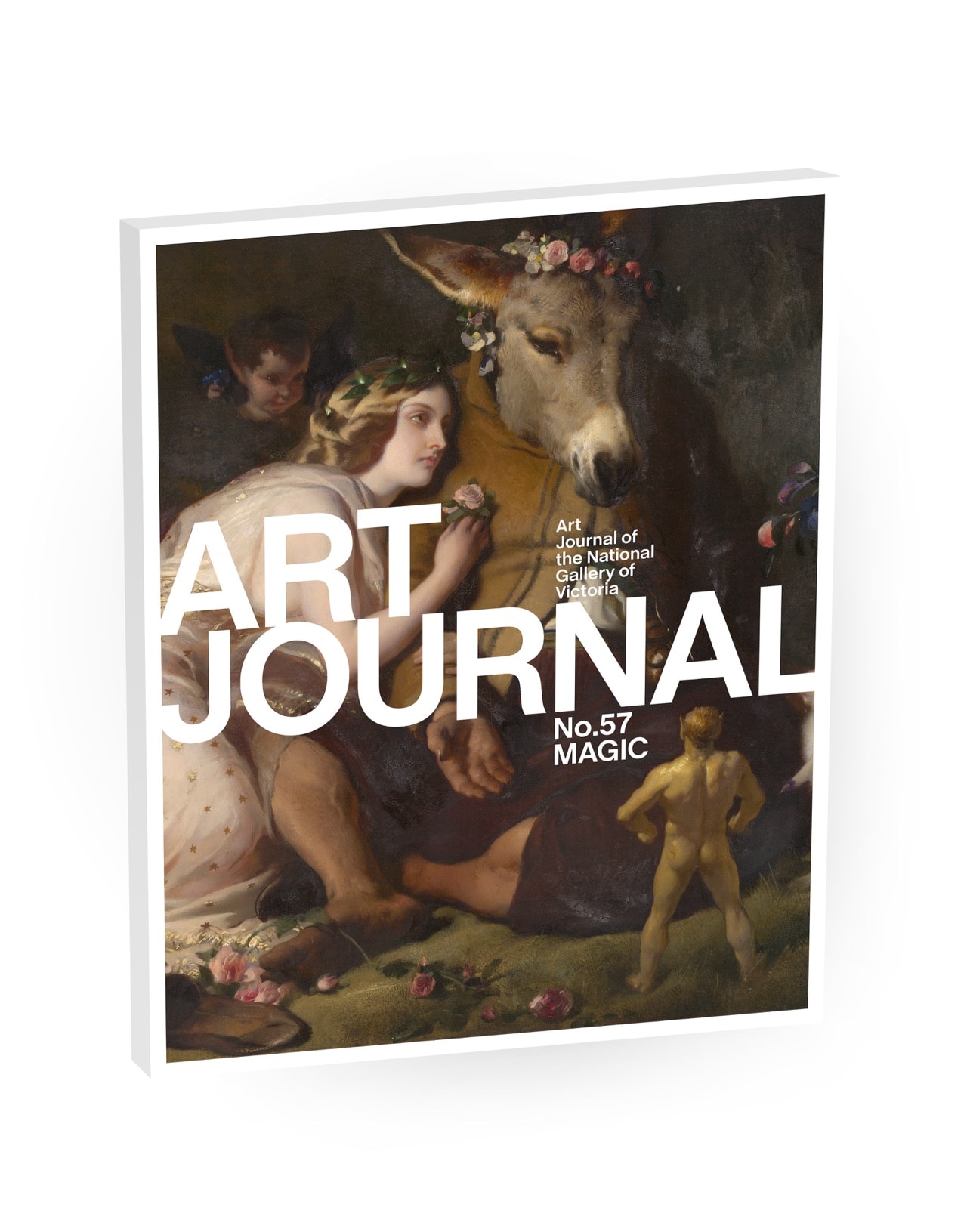
This edition of the Art Journal of the National Gallery of Victoria includes essays addressing a variety of works from the NGV Collection assembled around the theme of magic. The notion of magic can be an elusive one, existing in traces and suggestions, its definitions liable to shift according to chronological, geographical and cultural context. The universe has long been perceived as subject to unseen forces, capable of influencing events, effecting change and presenting illusion. These forces, loosely defined within this edition as ‘magic’, are to some, an ontological way of being, to others they are conscious acts of deception.
While definitions of magic continue to elicit debate, these essays offer insight into the manifold ways in which experiences and expressions of magic (from the spiritual to the practical) have manifested in art.
Judith Ryan AM’s essay on Yawkyawk, mermaid spirits from Western Arnhem Land, as well as Ngalyod, the shape-shifting, ancestral being, challenges our preconceptions about Aboriginal cosmology. David Haworth explores the artful nature of disguise, and how camouflage intersects with both magic and art. With an essay that discusses magical iconography in the couture garments of Elsa Schiaparelli, Dilys Blum takes readers on a journey exploring the transformative qualities of fashion.
Matthew Martin explores the diverse meanings and reference points of an imagined language that ornaments the rim of an Italian Renaissance dish. Through the lens of critical theory, Tom Melick offers a complex and speculative account of some of Clare Milledge’s recent works. Ted Gott offers insight into one of the most recognisably ‘magical’ paintings in the Collection, Edwin Landseer’s Scene from a Midsummer Night’s Dream. Titania and Bottom, 1848–1851. Finally, in an essay that considers the inherently magical lives of people in Ancient Egypt, understood through the changing cultural aesthetics of the Egyptian amulets, Joy Kremler sheds new light on the Gallery’s collection of Pataikos amulets.
We hope that you will enjoy these new and exciting perspectives on works in the NGV’s diverse collection. We are grateful to each of our writers for bringing original scholarship and insight to the works considered.
Angela Hesson and Myles Russell-Cook, Editors